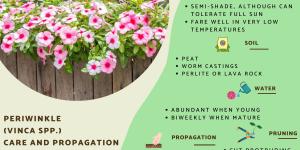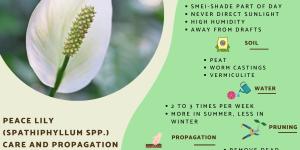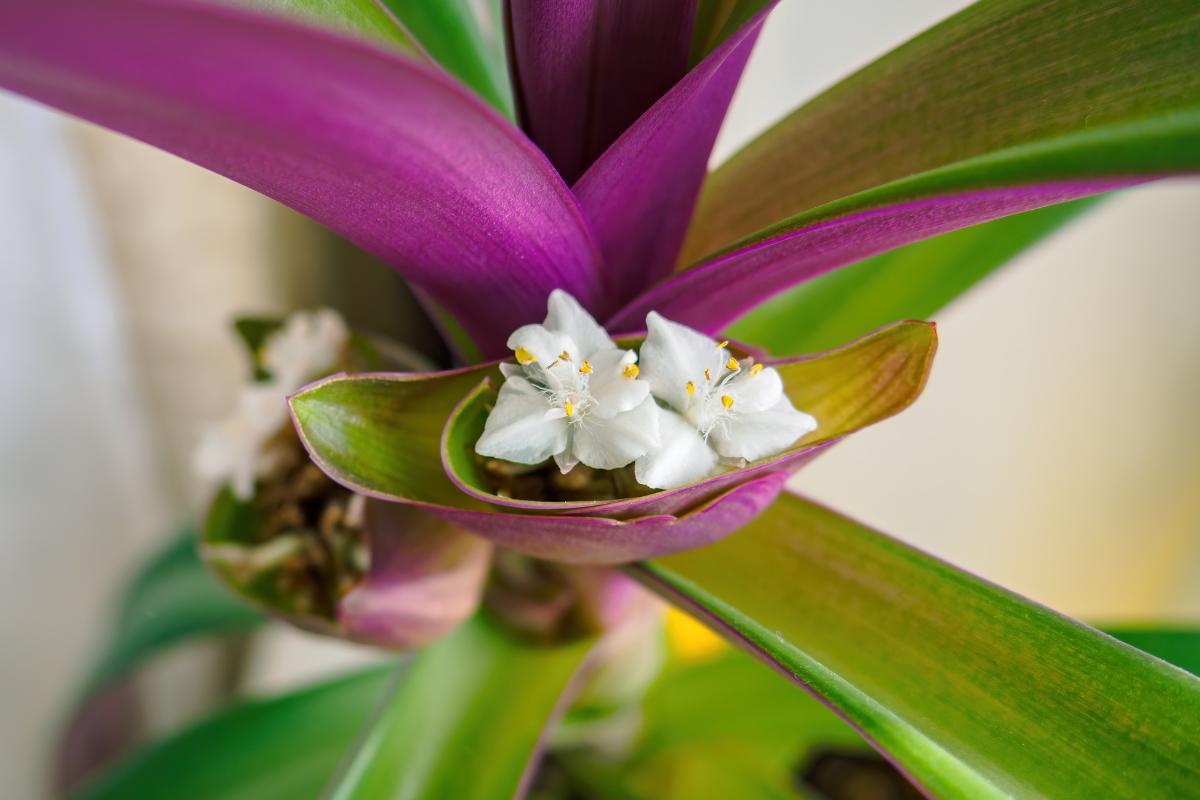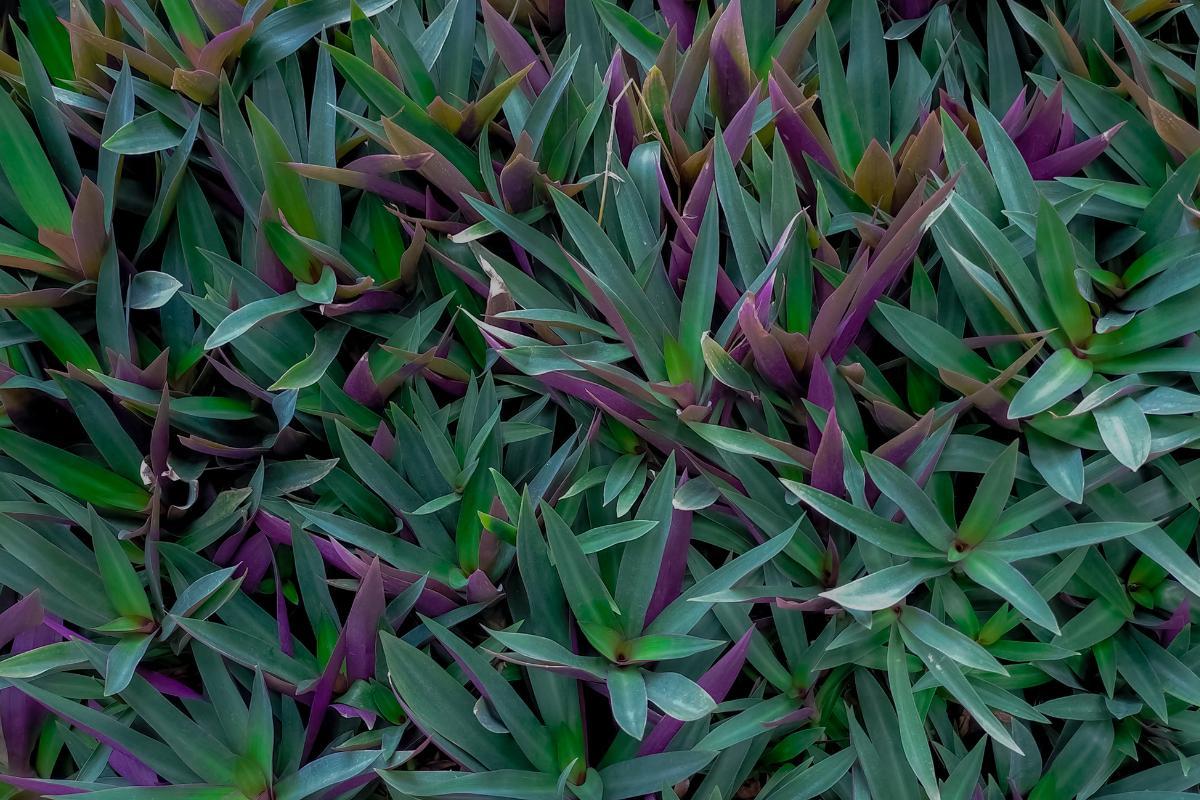Oyster Plants Care - Tradescantia spathacea


Known variably as oyster plants, Moses-in-the-cradle and other common names, the species Tradescantia spathacea requires a certain level of care. These include filtered light, well-drained soil, moderate watering and temperatures above 10 ºC/50 ºF. It can also be propagated through cuttings or by division. It serves as an ornamental plant, although we need to be careful as it can be an invasive species.
Oyster plants can be of varying colors, but they are known for the purple undersides. Their leaves are beautiful, but so too are the flowers which tend to be quite hidden at the center of the plant. To ensure bloom and overall health, take a look at our guide to oyster plants care.
Characteristics of oyster plants
Before we look closer at how to care for oyster plants, we can learn a little about their characteristics. This can help us know if they are suitable plants for our home:
- They are known as oyster plants because the flowers are located in the center, as if the surrounding leaves are an oyster shell hiding a pearl. It is also for this reason they are sometimes known as a boatlily since the leaves act like a boat's hull.
- It is characterized by the fact that the leaves are lanceolate, fleshy and have a shiny waxy texture. Each of them is about 12"/30 cm long. It is very striking because it combines purple on the underside with intense green on the top. They also have white variegation on the top of the leaves.
- Its growth is subshrub, where several clusters are grouped together.
- It is a close relative of the silver inch plant (Tradescantia zebrina) and purple secretia (Tradescantia pallida). Oyster plants differ in that they tend to grow taller.
- It develops sporadically small white flowers which are covered by shell-shaped bracts. They grow axillary.
- It is perennial, so it stays alive all year long as long as good care is provided. This is the care for Tradescantia spathacea that we explain in the sections below.
- It is sometimes (although rarely) categorized under the taxonomic names Rhoeo spathacea or Rhoeo discolor.
- Some research points towards this plant having certain medicinal benefits such as antifungal properties[1]. However, there is no conclusive evidence of its efficacy and some claim it has a range of benefits which have no proven validity.
If you want to purchase oyster plants for the home, you can price it with the link below:

Light, temperature and location of oyster plants
Ideally oyster plants should be grown in filtered light as they are native to soils covered by the Central American jungle canopy. They also tolerate semi-shade and full sun. It is essential they have some sun because this provides the vibrant purple color to the underside of the leaves. If you notice it is losing color, it needs to be moved to a place with more light. In very dry and hot summers it is recommended to place them in semi-shade because the strong sun can make the plant leaves turn yellow or brown.
It can be kept both as an outdoor or indoor plant. When indoors, oyster plants should always be placed where there is plenty of light. It does not tolerate low temperatures, so they must always be above 10 ºC/50 ºF.

Soil for oyster plants
It is quite tolerant of different soils, although nutrient-rich soil with good drainage is recommended. To do this, prepare a mixture of substrate based on worm castings, peat or black soil. Provide material that promotes drainage, such as vermiculite ,volcanic gravel, perlite or tepojal. Mix the components well in equal parts. During the growth stage in spring and summer, a balanced fertilizer in liquid format can be added every month.
Here you can see and buy some of these substrate materials for plants:
- Worm castings: also known as worm humus, it provides many nutrients and is completely natural, since it is organic matter made by worms. Learn how to make your own worm castings at home.
- Peat: it is a vegetable substrate for plants ideal for the growth and fixation of the roots.
- Vermiculite: it is a mineral that has a high capacity to retain the water that the plant needs and eliminate the excess.
- Volcanic gravel: it serves to preserve the humidity of the soil for a longer time, but avoids waterlogging. It also protects the roots from sudden changes in temperature and favors their oxygenation.
- Tepojal: it is a mineral material with a small pores that facilitate optimal moisture retention and the release of excess water. It also helps with aeration and oxygenation of the substrate for plants and texture to facilitate the grip of the roots.
Learn about what soil is best with our guide to organic fertilizers for the garden.
Oyster plants watering
The soil should be moist, so the frequency of watering will be determined by your area and the season. Care must be taken not to flood the oyster plant soil because this will lead to root rot. Good substrate preparation is key to managing soil moisture. In times of heat and growth, watering should be increased and in winter reduced.

Oyster plant propagation
If you want to reproduce the oyster plant, there are two main ways. Oyster plant propagation is as follows:
- Oyster plant reproduction by cuttings: a healthy plant is chosen and cut by the stem, then placed in a jar with water or directly on the ground. The tools that are used to cut must be previously washed and disinfected, this is to avoid the development of fungi both in the mother plant and in the cutting. After placing it in water, it must be transferred to a solid substrate once it has developed roots, so that it has enough nutrients to continue growing. When placing the plant in the substrate, it is necessary to water abundantly.
- Oyster plant reproduction by division: since clusters are formed from a single plant. To do this, the cluster of various stems is completely unearthed, to separate them at the root and replant the two new plants. It is necessary to water abundantly during the phase of establishment of the new plant in the substrate.
If you are looking for other plants to care for at home or in the garden, you can take a look at our related articles on how to care for prayer plants and caring for perennial larkspur.
If you want to read similar articles to Oyster Plants Care - Tradescantia spathacea, we recommend you visit our Plant care and cultivation category.
1. Oon, Y. N., Chen, R. J., Kuan, J. M., & Sit, N. W. (2021). Bioactivity of medicinal plant extracts against human fungal pathogens and evaluation of toxicity using Vero cells. Tropical biomedicine, 38(3), 469–475. https://doi.org/10.47665/tb.38.3.090
- Duke, J.A. (2008). Duke's Handbook of Medicinal Plants of Latin America. UK: Taylor & Francis.
- Bohmig, F. (2022). The Month-by-Month Gardening Guide: Daily Advice for Growing Flowers, Vegetables, Herbs, and Houseplants. United States: Timber Press.
- Royal Horticultural Society (nd) Tradescantia spathacea. Retrieved from: https://www.rhs.org.uk/plants/18299/tradescantia-spathacea/details








